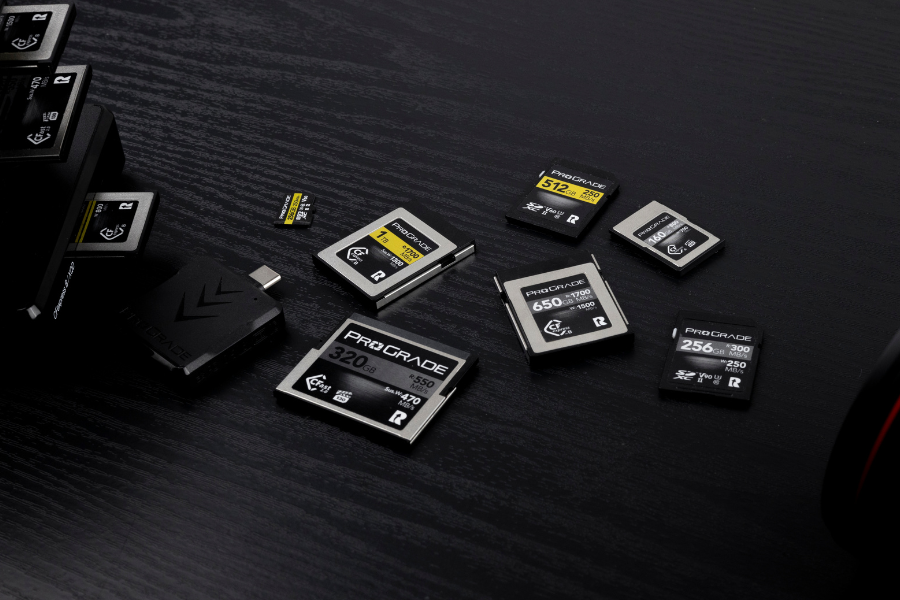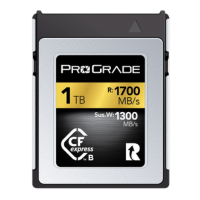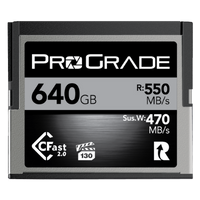As a photographer, you know that capturing high-quality images is only part of the equation. Efficient data storage and management are equally important to ensure your work is secure, accessible, and easy to work with.
In this article, we’ll explore the importance of efficient data storage in photography, introduce you to different types of memory cards, and provide expert tips and tricks for maximizing their performance. By the end of this article, you’ll have a better understanding of how to choose, maintain, and use memory cards to their fullest potential.
Types of Memory Cards: Understanding SD, CFast, XQD, and CFexpress
When it comes to memory cards, there are several types to choose from, each with its own advantages and limitations. Understanding the different types of memory cards available for photography is essential to ensure you choose the right one for your needs.
SD (Secure Digital) Cards: SD cards are the most commonly used memory cards in digital cameras and come in various sizes and speeds. Speed ratings are determined by their video speed class, with V6 being the slowest and V90 being the fastest. The higher the class number, the faster the card’s read and write speeds. Depending on the model, SD cards have storage capacities ranging from a few gigabytes to several terabytes.
CFast Cards: CFast cards are designed as an improvement on CompactFlash (CF) cards, using the same form factor but with the addition of a Serial ATA (SATA) interface to offer faster read and write speeds. This allows CFast cards to achieve speeds comparable to solid-state drives, making them the favorites of many professionals. However, CFast cards are less common than other memory card types; not all cameras and devices support them. In addition, while they share the same physical size as CompactFlash cards, CFast cards are incompatible with CompactFlash slots.
XQD Cards: XQD cards utilize a PCIe interface to achieve read and write speeds of up to 440MB/s, making them suitable for high-resolution videography. These cards typically offer larger capacities than SD cards. While not as widely supported as other memory card types, XQD cards remain compatible with a number of cameras. However, it’s worth noting that CFexpress cards have emerged as a more advanced option, offering even higher performance and faster speeds for professional photographers and videographers.
CFexpress Cards: CFexpress cards represent the newest generation of memory cards, designed for rapid data transfer and storage. They come in Type A and Type B formats, offering read and write speeds of up to 1700MB/s for Type B cards. Type A cards are more compact, while Type B cards share the same form factor and connection as XQD cards. This similarity has led many photographers and videographers with XQD-compatible cameras to switch to CFexpress Type B cards, as they provide nearly four times faster read and write speeds. Please note that our ProGrade Type A cards feature different read and write speeds compared to our CFexpress Type B cards. Make sure to check the specifications for each card type to ensure you choose the best option for your needs.
Factors Affecting Memory Card Performance: What You Need to Know
While memory cards offer convenient and efficient data storage, their performance can be affected by several factors that photographers should be aware of. Environmental Factors are one of them. Severe temperatures, humidity, and exposure to water or dust can all impact the performance and durability of your memory card. It’s important to store your memory cards in a dry, cool environment and protect them from moisture and dust. That said, compared to cheap, consumer-grade memory cards, high-end memory cards are more durable and designed to be resistant to environmental factors, such as water, dust, and accidental drops.
Choosing the Right Memory Card: Tips for Matching Your Needs and Budget
Choosing the right memory card can be a daunting task, with a variety of options available at different price points. Here are 3 tips to help you match your needs and budget with the right memory card:
1. Identify Your Camera’s Requirements and Capabilities: Different cameras have different requirements and capabilities regarding memory cards. For example, high-end cameras with advanced features such as fast burst modes and 4K video recording may require faster read and write speeds to prevent buffering and dropped frames. Check your camera’s specifications and choose a memory card that meets or exceeds those requirements.
2. Balance Storage Capacity and Data Transfer Speeds: Memory cards come in a range of storage capacities, from a few gigabytes to hundreds of gigabytes. While it may be tempting to choose the card with the largest capacity available, it’s necessary to consider the balance between storage capacity and data transfer speeds. Memory cards with larger capacity take longer to copy data, even if they have the same or (in some cases) faster speeds than smaller capacity cards, simply because they carry more data. This can create gaps in your workflow, especially if you need to quickly transfer images to your computer or other storage devices. For this reason, it may be better to use two smaller capacity cards instead of one large capacity card, as it allows you to switch between cards without interrupting your workflow.
3. Look for Reputable Brands and Ratings: When choosing a memory card, it’s important to look for reputable brands and ratings. Stick to well-known brands with a proven track record of quality and reliability. Look for speed ratings, such as V60 or V90, and don’t confuse 1700MB/s with a 1,666x speed marking. Many not-so-reputable brands use shady marketing tactics and, instead of straightforward numbers, present how much faster the memory card’s speed is compared to a CD-ROM drive. This kind of comparison has no real value and is only meant to make the card seem faster than it actually is. To put that into perspective, a CD-ROM has a speed of 150KB/s, so a 1,666x card is 1,666 times faster than a CD-ROM, giving it a max read and write rate of only 250MB/s. Not even close to 1700MB/s.
Memory Card Maintenance: Best Practices for Prolonged Card Health
Proper maintenance of your memory cards is essential to ensure their longevity, maintain their capacity, and prevent data loss. Two key factors to consider regarding memory card maintenance are proper insertion-ejection techniques and formatting.
First, it’s crucial to properly insert and eject your memory card to prevent damage to the card or the camera’s card slot. When inserting the card, ensure it is facing the right direction and clicks into place. When removing the card, use the camera’s “eject” function to safely eject it before physically removing it.
Formatting your memory card is also vital for maintaining its health and ensuring optimal performance. Formatting removes all data from the card and resets it to its original state, which can help prevent data corruption and improve read and write speeds, as well as capacity. Therefore, it’s recommended to format your memory card regularly, especially after transferring files to your computer or other storage devices. Just be sure to back up any important files before formatting, as formatting memory cards using your computer will erase all data on the card.
Formatting large-capacity cards can sometimes take many hours. That’s why we developed RefreshPro, a software for ProGrade Digital memory cards to bring them back to their factory-fresh condition and perform at their best in mere seconds.
Optimizing Data Transfer Speeds: Enhancing Your Photography Workflow
High-speed data transfer is essential for streamlining your photography workflow and saving time. To optimize data transfer speeds, you can start by investing in high-speed card readers with USB 3.2 or Thunderbolt connections. Ensure your computer or device is compatible with the connection type you choose to maximize transfer speeds.
Organizing and managing your files can also help improve transfer speeds. Before transferring files, organize them into separate folders by date, project, or other criteria to make them easier to find and manage. It’s also important to properly label your files with descriptive titles and keywords to make them easier to search for later.
To further improve transfer speeds, consider using file management software that can automatically back up your files and transfer them to multiple storage locations simultaneously. This can save time and reduce the risk of data loss.
Data Backup and File Management: Safeguarding Your Precious Images
Creating a reliable backup strategy is crucial to safeguarding your precious images and ensuring they’re not lost in the event of data corruption, loss, or theft. The first step in creating a backup strategy is to have multiple copies of your files stored in different locations. This can include using cloud storage services, external drives, or a combination of both.
Cloud storage services offer the advantage of being accessible from anywhere with an internet connection and typically offer automatic backup options.
External drives offer the advantage of being physically separate from your computer or camera, reducing the risk of data loss from theft or hardware failure. Consider investing in high-capacity external drives that can hold all of your files and using software to automate backups regularly.
Conclusion: Getting the Most Out of Your Memory Cards for Better Photography Experiences
By understanding the different types of memory cards and the factors affecting their performance, maintaining them properly, optimizing data transfer speeds, and creating a reliable backup strategy, you can capture your precious moments with ease and confidence. Don’t let memory card issues slow you down – with these best practices, you’re ready to take on any photography challenge.





